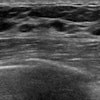The following article by Thomas W. Greeson and Heather M. Zimmerman, of the law firm Reed Smith and guest editors of health policy for the American Roentgen Ray Society (ARRS), originally appeared in the American Journal of Roentgenology (November 2005, Vol. 185:5).

Expansion of the Stark law
Congress enacted the Stark statute in an attempt to prevent overutilization of healthcare services covered by Medicare, and to discourage physicians from selecting treatment modalities based on financial incentives rather than medical necessity. The federal Stark statute and its corresponding regulations (the Stark law) generally prohibit a physician who has a direct or indirect ownership interest, investment interest, or compensation arrangement with an entity from referring patients to that entity to receive "designated health services" that are reimbursable by the Medicare or Medicaid programs.
The term "designated health services" or "DHS" has traditionally included "radiology and certain other imaging services," such as radiography, ultrasound, MRI and CT, and "radiation therapy services and supplies." Currently, the definition of "radiology and certain other imaging services" specifically excludes diagnostic nuclear medicine procedures. Similarly, the definition of "radiation therapy services and supplies" specifically excludes nuclear medicine procedures. As a result, a physician could hold an ownership interest in an imaging center that provides PET and nuclear medicine services and refer Medicare and Medicaid patients to the entity for the provision of such services without running afoul of the Stark prohibition on physician self-referrals.
The Centers for Medicare and Medicaid Services (CMS) is proposing to eliminate this exception for nuclear medicine services by revising the definitions of "radiology services" and "radiation therapy services" to specifically include nuclear medicine rather than excluding such services. In addition, CMS would revise its list of Current Procedural Terminology (CPT) and Healthcare Common Procedure Coding System (HCPCS) codes that constitute DHS to include CPT and HCPCS codes that describe diagnostic and therapeutic nuclear medicine procedures. The list of CPT and HCPCS codes would be expanded to include 78000 and 79000 series CPT codes as well as the corresponding A, C, and Q series HCPCS codes used to describe the radiopharmaceuticals administered during the performance of the listed procedures.
In discussing its reasons for including nuclear medicine in the definition of DHS, CMS noted the rapid growth in utilization (and possible overutilization) of nuclear medicine services that has occurred during the relatively short time period that Medicare has been covering such services. CMS cited the March 17, 2005, testimony made by the executive director of the Medicare Payment Advisory Commission (MedPAC) that utilization of nuclear medicine services by Medicare beneficiaries grew an astounding 85% during the period of 1999 through 2003. Additionally, CMS cited the Moskowitz study (AJR, July 2000, Vol. 175:1, pp. 9-15) that showed that when a managed care organization prohibited certain nonradiologist specialties from billing for imaging services, total billings for imaging services declined 20% to 25% from the amount of billings that were expected given the previous trend in imaging growth.
This decline appeared to be due, in large part, to the fact that approximately half of the imaging previously performed by self-referring physicians ceased when the physicians lost the ability to retain a financial interest in the technical component services. Although the Moskowitz study did not include nuclear medicine services, CMS concluded that the results of the study, which seem to indicate that financial interest does in fact pose a risk of overutilization and anti-competitive behavior, could just as easily be applied to nuclear medicine services. Therefore, in an effort to protect the Medicare program from abuse, CMS is proposing to include nuclear medicine services in the list of services subject to Stark law restrictions on physician self-referral.
Although it is likely that the proposal will become final and nuclear medicine services will be added to the list of DHS, this change will not necessarily prevent nonradiologist physician groups from self-referring for nuclear medicine services. Just as with radiography, CT, and MRI, a physician practice may own nuclear medicine equipment and perform nuclear medicine services for its patients using that equipment if the physician practice is able to satisfy the requirements of the "in-office ancillary services" exception to the Stark law.
Multiple procedure reduction
Another proposal CMS has made in an effort to control the escalating costs of Medicare reimbursement for imaging services performed in a physician office or other freestanding setting is to reduce technical component (TC) payments for multiple diagnostic imaging procedures performed on the same patient on the same day. Specifically, CMS intends to pay the full TC for the highest-priced procedure but reduce the TC payment by 50% for any additional procedures involving contiguous body parts that are within the same family of codes. For example, if an imaging center performed an MRI of the abdomen and an MRI of the pelvis on the same patient on the same day, Medicare would pay the full amount of the TC ($978) for the MRI of the abdomen, but pay only 50% of the TC ($529 - 50% = $264.50) for the MRI of the pelvis. The proposed multiple procedure reduction does not apply to professional component services.
CMS proposes to create 11 families of codes separated by imaging modality and body region (for example, Family 4 MRI and MRA [Chest/Abdomen/Pelvis] and Family 5 MRI and MRA [Head/Brain/Neck]). The multiple procedure reduction would only apply to multiple procedures performed within the same code family, such as the MRI of the abdomen and pelvis described above. The reduction would not apply, for instance, to an MRI of the brain if performed during the same session as a CT of the neck and spine.
CMS believes the reductions are warranted because when multiple images are performed in a single session, most of the labor activities and supplies associated with performing the service are not provided twice. Specifically, CMS identified the following activities as ones that are performed only once even when multiple imaging procedures are performed in the same session: greeting the patient, positioning and escorting the patient, providing education and obtaining consent, retrieving prior exams, setting up the IV, and preparing and cleaning the room. If the services and supplies are not provided twice, CMS reasons that it should not have to pay twice.
If the CMS proposal to implement multiple procedure reductions for TC payments becomes final, radiology practices that perform professional, management, billing, or other services based on a percentage of global collections should promptly attempt to renegotiate such arrangements in an effort to minimize the negative impact the reduction in TC payments will have on the practice's compensation for professional interpretation services.
Florida whistleblower action
On June 1, 2005, the U.S. District Court for the Southern District of Florida unsealed an action filed under the federal False Claims Act against University MRI & Diagnostic Imaging Centers (the Center). The complaint was originally filed under seal in December 2002 by a neuroradiologist that at one time worked for the Center. Among other activities, the lawsuit alleges that the Center violated the federal antikickback statute by reportedly engaging in three types of activities.
First, it alleges that the Center entered into a lease arrangement with orthopedic surgeons, neurologists, chiropractors, and other referring physicians under which the imaging center performed a specified number of MRIs per month for a discounted fee per scan. The referring physician would then bill a third-party payor for the MRI and collect a reimbursement amount that exceeded the fee paid to the Center. The lawsuit alleges that this profit constituted a kickback by the Center to the referring physicians.
Second, the lawsuit alleges that the Center entered into medical director arrangements with referring physicians under which the Center would pay compensation to the physicians. It is alleged, however, that the referring physicians performed few, if any, services in exchange for the compensation. Thus, the compensation reportedly constituted a kickback paid by the Center to the referring physicians.
Third, the lawsuit alleges that the Center entered into clinical investigation agreements with referring physicians under which the physicians were paid compensation but performed few, if any, services for the Center.
The parties have agreed to a six-month stay of the case through the end of December this year while the U.S. Attorney's office further investigates the case. If the parties agree to settle the matter, the case could have an impact on similar lease arrangements across the country if the government requires as a condition of settlement that the Center either eliminate or substantially revise its leasing arrangement with referring physicians.
Requiring the Center to eliminate rather than revise its lease arrangements would signal to other parties involved in similar arrangements that the federal government considers these arrangements to be improper under the federal antikickback statute. Therefore, the outcome of this case has the potential to significantly affect many existing imaging center joint ventures.
Louisiana Medical Board statement
In June of this year, the Louisiana State Board of Medical Examiners issued a statement of position addressing arrangements in which a referring physician leases or otherwise purchases both the technical and professional component services necessary to provide imaging services to the physician's patients on an unscheduled, per-use basis for payment of a fee that is less than the reimbursement amount the physician will ultimately receive from the patient and/or a third-party payor. The board unequivocally concluded that such arrangements violate the Louisiana antikickback law.
Under the lease arrangement at issue, the referring physician enters into an arrangement with a diagnostic imaging center owner (the Center) to obtain both the technical and professional components of MRI or other imaging services on a turn-key, as-needed basis for a predetermined, per-use fee. The referring physician orders the imaging service and refers the patient to the Center. The Center performs the technical and professional services, and bills the patient and/or third-party payor for the services under the referring physician's billing number. The Center collects the reimbursement and deposits the amount, less the Center's lease fee, into the referring physician's account. The lease fee is an amount that is significantly less than the reimbursement obtained from third-party payors so the referring physician makes a profit on any patient he or she refers to the Center.
The Louisiana antikickback law states that "[n]o health care provider shall offer, make, solicit, or receive payment, directly or indirectly, in cash or in kind, for referring or soliciting patients." This law applies not only to Medicare and Medicaid patients, but to all other patients regardless of payment source. The board analyzed the arrangement and concluded that, by foregoing the opportunity to collect and retain full reimbursement for imaging services provided to the referring physician's patients, the Center is effectively sharing its profits with the referring physician. This sharing of profits is clearly a form of remuneration paid by the Center to the physician in exchange for patient referrals. Thus, the arrangement violates the antikickback law and would subject the physician to disciplinary action by the board.
Shortly after the board issued its position statement in June, it began an investigation of similar imaging center arrangements by issuing subpoenas to 30 physicians reportedly involved in such arrangements. The board's position statement and investigation will certainly impact the structure of leasing arrangements in the state of Louisiana, and may also trigger other states with similar antikickback laws to consider issuing similar position statements.
Summary
If current regulatory and enforcement activities are any indication, both federal and state government agencies have taken note of the sharp increase in imaging service utilization over the past few years, and are responding by implementing cost-cutting measures and scrutinizing imaging services arrangements involving referring physicians. Therefore, it would be prudent for any radiology practice contemplating entering into a joint venture, lease agreement, or similar imaging services arrangement with a referring physician practice to consult with legal counsel prior to embarking on what may prove to be a perilous venture fraught with legal and business risk if not structured appropriately.
By Thomas W. Greeson and Heather M. Zimmerman
AuntMinnie.com contributing writers
December 12, 2005
Greeson and Zimmerman of the law firm Reed Smith are guest editors of health policy for the American Roentgen Ray Society (ARRS). For further information, Greeson can be contacted at [email protected]. This article originally appeared in the American Journal of Roentgenology (November 2005, Vol. 185:5). Reprinted by permission of the ARRS.
Related Reading
BEIR VII and separating fact from fear, November 18, 2005
Medicaid cuts and radiology's quandary, September 13, 2005
MedPAC, Medicare, and imaging growth, August 16, 2005
Medicare's condition in 2005: critical, June 15, 2005
Health benefits at work: what to expect in the future, May 24, 2005
Copyright © 2005 American Roentgen Ray Society



















